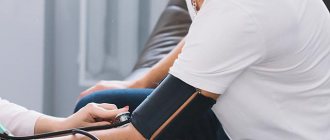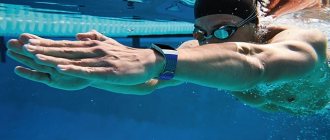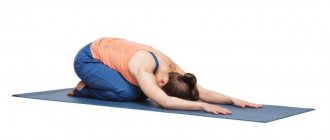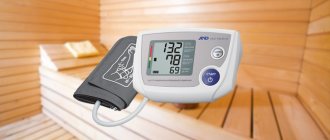Hypertension is a disease whose main indicator is persistently high blood pressure. This is a big test for the body, and, undoubtedly, therapy must be serious. But along with taking nutritional medications and adjusting the lifestyle of a hypertensive patient, physical education does not become prohibited for a person. Only at the last stage of arterial hypertension can physical activity worsen the patient’s situation. Is it possible to do bodybuilding if you have hypertension? And should people with high blood pressure go to fitness?
Pressure and sports
High performance sports have no correlation with human health. It requires increased performance of one’s physical capabilities, and surgeries for an athlete, rehabilitation measures, and treatment are not uncommon. But physical education as a natural, acceptable, useful activity for everyone is a completely different matter.
Hypertension is not a reason to give up physical education. And even if a person was previously far from it, this does not mean that he cannot begin to engage in it. Therapeutic gymnastics and swimming are especially useful for hypertensive patients.
But specific, individual recommendations can only be fully given by the attending physician. Much depends on the stage of hypertension, degree, risk, presence of concomitant pathologies, etc.
A doctor's consultation is also necessary in order to:
- Find out what exactly makes sense for the patient to do;
- Find out the optimal duration of training;
- Determine the frequency of classes;
- Find out how and why you need to measure blood pressure and pulse during training;
- Understand when to stop exercising;
- Find out which exercises are recommended and which ones should not be done.
In short, the issue of training for a hypertensive patient is very individual. And you definitely shouldn’t conduct such experiments on yourself without a doctor’s permission.
Bodybuilding and hypertension: the effect of strength training on blood pressure
It is common knowledge that excessive strength training increases blood pressure. However, how does this affect the development of hypertension - a pathology in which high blood pressure is observed (140 mm Hg and above)? To answer this question, I propose to turn to the research of the Kama Institute of Physical Culture.
Do strength training contribute to the development of hypertension?
Without going into medical terms and abstruse scientific words, I will briefly present the essence of the results of this study. According to them, an increase in systolic pressure in athletes is observed already in the first year of bodybuilding and is approximately 16 mm. Hg Art. Thus, their normal pressure is instead of 120 mm. Hg Art. becomes equal to 136 mm. Hg Art. (140 mmHg is already hypertension). It is worth noting that there is no further increase in pressure with increasing training experience.
Thus, young people aged 17-22 years already have high blood pressure. In this regard, a logical question arises - what will happen to them at 40-50 years old? Many experts advise switching to aerobic training - they say that they are an ideal means of normalizing blood pressure. However, scientists do not share this opinion and present their table “Percentage of patients with hypertension among various sports.”
As you can see, weightlifters are the leaders in percentage terms. In addition, aerobic sports are also at risk. The lowest percentage of hypertension is observed among gymnasts. This is most likely due to the fact that their load consists of short-term static stresses combined with dynamic loads.
Author's opinion
By analyzing the table, you can try to link the types of load to the percentage of hypertension. However, if the situation with the first and last places is clear (different types of power load), then what about the second and penultimate places? Football and swimming are inherently based on cardio exercise, but in the case of football it is harmful (judging by the graph), and with swimming, on the contrary, it is beneficial. The same can be said about volleyball and basketball - essentially similar sports (and types of workload) show a huge difference in % (15.6% versus 9.5%). Wrestling and gymnastics represent the same static strength load in combination with dynamic, but the percentage of patients they have is completely different (12.6% versus 8.4%). Thus, linking the percentage of patients with hypertension in a particular sport to the nature of the load does not seem to me to be a completely correct decision. But if the nature and type of load in this case is not a significant indicator, then a particular sport will not be such. Right?
The percentage of hypertension among ordinary people (9.9%) also raises great doubts. To understand: according to statistics from the World Health Organization, approximately every 5th (approximately 20%) person on the planet suffers from hypertension. In Russia, this figure is much higher and amounts to at least 30% (1/3 of the population). Based only on these data, one can interpret the presented graph in a completely different way, namely, “Reduction in % of hypertension when playing various sports.” Do you notice the difference? Changing just one parameter (% of diseases among the population) radically changes the situation.
I would not like to draw any conclusions about the veracity or inaccuracy of such studies; I just tried to draw your attention to some interesting points of this scientific research, as well as point out the possible presence of contradictions in it. Conclusions, as always, are up to you to draw.
Rate the usefulness of this article:
Loading.
Bodybuilding for hypertensive patients
Bodybuilding (or bodybuilding) is the process of building muscle and developing it through special physical exercises with weights. Additionally, high-energy nutrition is used.
And here the verdict is simple - bodybuilding and pressure are incompatible. If a person is diagnosed with arterial hypertension, then bodybuilding is definitely contraindicated for him.
Why is that? These activities increase arterial tone. Hypertensive patients should not lift heavy objects. There is a weight that is acceptable, but a doctor can determine it; everything is individual. But bodybuilding is not associated with light weights, so definitely not.
However, there is no need to be upset. There are many other ways to maintain physical activity, take care of your body, including body aesthetics, without such harsh measures for a hypertensive patient as bodybuilding. When choosing the optimal activities, work using the “by contradiction” method, that is, first cross out what you definitely cannot do.
Exercising for stage II hypertension
Patients with stage II hypertension are interested in whether it is possible to do various physical exercises. Many people think that this is a reason to stop studying, but this is not so. When diagnosing this condition, sport helps:
- normalize the functioning of the cardiovascular system;
- avoid obesity, which increases blood pressure;
- improve the sinking of blood vessels;
- saturate the blood with oxygen.
People who lead an unhealthy lifestyle, do not watch their diet and do not alternate rest with work have an increased chance of developing hypertension. Despite the fact that bodybuilding is contraindicated for conditions such as hypertension, the patient can engage in other sports. Fitness is a lighter version of physical activity.
Correctly such exercises not only stabilize a person’s condition, but also help defeat the disease.
What sports activities are contraindicated for hypertensive patients?
Any doctor will support the patient in his desire to exercise. If this is not the stage when bed rest is the main prescription, physical activity is allowed. And only your doctor, assessing your condition objectively, will indicate the list of areas in which you are able to realize your potential in terms of physical education.
If a patient has high blood pressure levels, he CANNOT:
- Get involved in lifting weights;
- Train in running (in particular, shuttle running);
- Do exercises to build muscles;
- In case of second degree hypertension, rhythmic gymnastics is prohibited;
- Lean forward, straining the muscles of your neck and back.
These are, of course, not all prohibitions. Running at a fast pace, running with obstacles is more of a sport than physical education. Therefore, the most correct thing that a doubtful hypertensive patient can do is to take referrals for physical therapy classes. There is a focus on maintaining the health of patients with existing diseases, including a group for people with high blood pressure.
When not to exercise
There are certain signs that indicate overexertion. This means that the person needs to stop training. And not only doctors, but also hypertensive patients themselves should know such signs.
Stop training if:
- Sharp jumps in blood pressure accompany the training process;
- Pain and heaviness appeared in the chest;
- Numbness is felt in the face, arms, and legs;
- My head is spinning;
- It gets dark in the eyes;
- There was noise in the ears.
If such signs appear, stop training. The pace of the next classes should be reduced, or even canceled for some time. You need to understand: high blood pressure with serious stress risks rupture of the vessel.
Can hypertensive patients go to the gym?
Hypertension and the gym are compatible only if several conditions are met at once. With the right approach to the matter, exercise will not cause harm; on the contrary, it will improve health and will be a kind of prevention of the progression of hypertension.
The algorithm of actions is simple:
- The patient must inform the instructor at the gym about his diagnosis, and may also have to show a certificate from a doctor, which is admission to classes. It is advisable that the trainer be an experienced one who has previously worked with hypertensive patients.
- When following an exercise program, it is important to maintain proper breathing. Inhalations should be shallow, exhalations should be smooth. You can't breathe deeply. When breathing becomes difficult, a stop is required, and only then you need to start performing the task again. Physical activity must be adequate to a person’s real capabilities.
- Classes begin with a warm-up; it can warm up the muscles and establish the mechanism of proper breathing before the main program.
- You definitely need to monitor your well-being. If you just get a headache or dizziness, or your pulse quickens, you should stop exercising. Take a break. If after fifteen minutes your performance improves, resume the activity.
- After completing the main program, do a cool-down. It is necessary to restore the heart rate, as well as blood pressure and breathing.
But you shouldn’t make sudden leaps, change the program, or make it heavier.
Tips for hypertensive patients: correct behavior during training
If you have been diagnosed with hypertension, in particular stage 1 hypertension, then taking medications is not yet indicated. But some lifestyle adjustments that will help stabilize the condition and relieve alarming symptoms are indicated. This is nutrition, this is the correct reaction to stress, this is, without a doubt, physical activity.
If this is your first time in the gym, then the session should not be long - literally 20-25 minutes. And you need to concentrate on 4-5 exercises that should be worked out well. The load should be directed to the legs. If you feel well over several workouts, the load can be carefully increased.
Listen to these recommendations:
- Try not to eat sweets on training days (and on any other days, for that matter). It can increase blood pressure and cause exacerbation of hypertension.
- Do not drink more than a liter of water during exercise. At the same time, it is water – not soda, juice or tea. These drinks are generally inappropriate during training.
- The main program begins with exercises for the legs - it would be wise to direct a large flow of blood to the legs.
- Do not do exercises that require you to bend your head below your waist.
- Training should be done in supersets, gradually reducing the intensity so that the heart rate is restored.
General recommendations
Eating certain types of foods rich in the amino acid L-tryptophan helps to relax the nervous system and reduce the body’s saturation with adrenaline after an active workout. These include:
- chicken, turkey fillet (breast);
- milk;
- dairy products;
- hard cheeses;
- soya beans;
- sesame seeds;
- peanut;
- pine nuts, walnuts;
- fresh river and sea fish;
- lean pork, beef.
Immediately after finishing your workout, it is useful to eat a handful of nuts or another product from the list. In order for the amino acid to be well absorbed, it is worth adding to your snack food that contains simple carbohydrates, magnesium, and iron. For example, a small cereal bar, a piece of dark chocolate, a glass of orange or other freshly squeezed fruit juice.
A visit to the shower or sauna at the end of the lesson should be dosed. You should enter a hot room (stand under running water) for a short time (3-5 minutes). The frequency of hot procedures is 2-3 times.
Listening to calm music has a relaxing effect. Therefore, athletes are recommended to add classical works to the playlist along with stimulating melodies.
How does training work for a hypertensive patient according to Bubnovsky?
Dr. Bubnovsky is the author of popular techniques that are designed for the physical recovery of people with chronic diseases. Addressing hypertensive patients, the doctor emphasizes that the proper workload for a person with hypertension will be monitoring blood pressure and stabilizing it at the proper level. And in order to perform exercises that contribute to this, it is not so important to be an experienced athlete. For grade 1 hypertension, physical activity will replace medications; partly the same can be said for grade 2 hypertension.
The doctor also notes the following: if the blood pressure of a hypertensive patient is 180/100 +, then you should not exercise. And if a person has already had hypertensive crises, then classes are completely contraindicated.
Basic gymnastic exercises for hypertensive patients according to Bubnovsky:
- Hands up. Lie on the floor on your back, raise your arms up (but they are behind your head). Inhale sharply. Return to first position. Repeat five to six times
- Movements in a circle. Lying on your back, raise your legs, make 9 movements in a circle (either clockwise or counterclockwise). At the same time, breathing is free. Then the leg lowers and the muscles relax. Do the same with the other leg.
- Correct breathing. Lie on your back, as you inhale, you need to push out the abdominal area, and as you exhale, pull your stomach in as much as possible. The exercise consists of 5 inhalations/5 exhalations.
- Muscle tension. Lying on your back, tense your leg muscles as much as possible, take a deep breath, and hold your breath. Exhale. Repeat three times.
When the workout is over, you need to stretch and relax. This will restore shortness of breath and prevent muscle pain from appearing.
If you decide to go to fitness
Hypertension and fitness are compatible if a person approaches the matter correctly, takes into account all medical recommendations, and knows how to control his condition during training.
Pilates, flex and yoga are definitely indicated for people with grades 1 and 2 hypertension. These fitness areas do not involve direct dynamic loads.
The training effect itself will be achieved through a smooth change in the position of the torso. The relaxing properties of these activities are also important; they help to relax the nervous system, which is especially important for hypertensive patients. Such classes, if carried out competently and systematically, can reduce blood pressure.
What is the cause of blood pressure problems?
Hypertension and bodybuilding, as well as many other strength sports, are closely related. During intense training and heavy lifting, the adrenal glands release large amounts of adrenaline into the blood. The hormone causes blood vessels to constrict. Due to this, blood pressure increases. A short-term surge in the level of this biologically active substance is not harmful to health. But long hours of daily training, accompanied by high levels of adrenaline, are the main factor in the development of hypertension in athletes.
There are other reasons for high blood pressure levels. All bodybuilders try to build muscle mass. Muscles that have increased in size must be provided with the necessary nutrients and oxygen. For this purpose, a dense network of blood vessels develops. To push blood through these pathways, the heart has to work twice as hard.
Bodybuilding exercises for hypertension should be carried out with a decrease in the number of static exercises.
Experts explain this requirement by its negative impact on the heart and vascular system. When performing exercises, a tense muscle puts pressure on the vascular walls, and the blood supply is disrupted. As a result, there is a jump in blood pressure readings.
An athlete's blood pressure may depend on his psychological state. Often, the factor that provokes an increase in blood pressure readings is the use of medications, stimulants, as well as the use of special dietary products.
Fitness for diabetes
A certain percentage of hypertensive patients, in addition to elevated blood pressure, also have diabetes mellitus. Is it permissible for a diabetic to engage in fitness to maintain health? It is definitely possible and necessary.
Fitness rules for diabetics with hypertension:
- An endocrinologist-diabetologist should not only know that you are engaged in fitness, he is the consultant who will suggest the regime and type of exercise. Preliminary coordination of your actions with the treating doctor is not even discussed.
- Monitor your sugar levels. Physical education will reduce alarming indicators, since during strength training the muscles actively consume glucose. This means that the doctor will have to reduce the insulin dose. And to make it clear how to do this correctly, a diabetic measures his sugar level, of course, on an empty stomach, before training and half an hour after it. These indicators are recorded in the diary.
- The load increases smoothly. Beginners start with classes for 7-10 minutes, nothing more. Gradually, the training time will increase to 35-40 minutes. And you need to train quite often, 4-5 times a week.
- Follow your feelings. Based on your controlled sugar level, it will be clear whether you need to exercise today or not. If during exercise, pain and heaviness appear in the chest, as well as headache and dizziness, if shortness of breath appears, stop training.
- Don't quit your studies. The success of physical activity lies only in its regularity. If you take a serious break, then all the positive effects of the classes will quickly disappear.
Choose the optimal fitness direction. Yoga, swimming, Pilates, and walking are considered suitable activities; strength training should be very gentle, or it is better to avoid them altogether.
Acceptable exercises
The first rule when doing any type of exercise is not to overdo it. Overwork will bring the opposite result - blood pressure after physical activity without proper preparation will only increase. In addition, there are some exercises that should be prohibited if you have hypertension.
- Exercises involving lifting heavy weights.
- Static load on certain muscles, while the whole body is motionless, fixed in one position for a long time.
- Rhythmic activities, which are characterized by sudden changes in movements.
- Exercises that require you to bend your head down put intense stress on your back and neck.
- Exercises that require throwing your head back, holding your breath, and raising your legs above head level.
- Any types of jumps.
- Throwing at a target.
- Fast short distance running, shuttle running.
- Quick squats and quick stair climbing.
- Rope climbing.
Signals requiring you to stop training:
- increased blood pressure (especially sudden and severe);
- cardiopalmus;
- severe shortness of breath;
- pain, heaviness, burning in the heart area;
- the appearance of black spots or darkness before the eyes;
- there was noise in the ears, dizziness;
- attack of nausea;
- swelling;
- numbness of the arms or legs, face, jaw, neck.
Since smooth movements and a calm pace are recommended for high blood pressure, stretching exercises are ideal in this situation. This type of physical activity strengthens the whole body, makes it flexible, flexible, and trains the heart without tiring it. It is enough to train for 15 minutes every day. Good stretching can serve as a preparatory step when moving on to exercises with increased load.
Dance exercises are a good way not only to strengthen the heart and blood vessels, but also an opportunity to lift your spirits and recharge with positive energy, which is also very important for the prevention of hypertensive attacks. To prevent increased blood pressure, calm ballroom dancing (slow waltz) or smooth movements of oriental dances are recommended.
Everyone needs daily exercise. What physical exercises should be included in morning exercises? For hypertension, it includes general strengthening exercises for different muscle groups: smooth turning of the body, light slow lateral bends, raising the lower extremities and bending the upper, calm walking in place. In order for the body to wake up and recharge itself with energy, it is enough to devote 15 to 30 minutes to morning exercises.
High blood pressure prohibits heavy lifting, but exercising using your own body weight is quite possible. Exercising on the horizontal bar is an excellent option for hypertensive patients. Of course, you need to constantly monitor your pulse and not force things: the load should be feasible and gradual. The number of beats per minute should not be higher than 140; good health is also an important indicator.
The training scheme will be as follows: you can train every other day, doing five approaches: first, do one pull-up (or push-up), then a break, then two, and so on up to five pull-ups in the fifth approach. On the first day, do pull-ups with a direct grip, the second day - exercises on parallel bars (push-ups), the third day - pull-ups again, but with a reverse grip.
You should not do more than five exercises at a time, so as not to provoke an increase in blood pressure. A gradual and careful increase in load reduces all risks to a minimum. If the body successfully copes with the load placed on it, you can increase it by applying a small additional load.
The use of physical therapy is known for its effectiveness in combating various diseases. An individually designed set of exercises, correctly selected by a specialist, is the best type of physical activity for hypertension. The benefits of such activities:
- Improves the health of the entire body.
- They have a separate effect on the central nervous system, blood vessels, and heart muscle.
- They improve blood flow and inhibit the development of atherosclerotic phenomena.
- Relieves headache syndrome and other unpleasant sensations associated with hypertension (heaviness, noise in the head, tightness in the chest, dizziness).
- They eliminate psychological stress, normalize sleep, and restore the ability to work.
Physical therapy for hypertension is recommended even in severe forms of the disease. You can practice while in bed: simple movements with changes in the spatial position of the torso or head (it should be elevated on a pillow), breathing exercises.
It is strictly forbidden to do therapeutic exercises:
- during angina attacks;
- with severe arrhythmia;
- immediately after a hypertensive crisis occurs;
- with increasing pressure (more than 200/110).
Rules for performing therapeutic exercises:
- one workout should take 15-60 minutes;
- it is necessary to alternate exercises to restore breathing with exercises for general strengthening of various muscle groups;
- when performing movements, you cannot hold your breath, make an effort or strain, you must move smoothly and calmly;
- observe the principle of gradualness when choosing a load;
- training should be regular, preferably every other day;
- use your arms with extreme caution, such exercises can increase blood pressure, you can load your legs more boldly;
- Exercises with bending and turning should also be done carefully and slowly;
- At the initial stage of training, general strengthening movements are recommended, then (after two to three weeks) you can add isometric exercises (using strength loads).
Slow squats are very useful for hypertension. This is the opinion of some experts (Professor S. M. Bubnovsky, M. S. Norbekov, I. P. Neumyvakin), authors of well-known health-improving techniques. Heinrich Epp’s method, described in his article “1000 Squats,” has gained many fans.
Squats can indeed be offered to hypertensive patients to train the heart and blood vessels; in terms of the strength of the therapeutic effect, they can be ranked next to full-fledged sports: running, walking, swimming.
These are very convenient exercises: they do not require special equipment or a large room, and are suitable for any age and level of physical fitness. At first, you can exercise every other day, then every day, constantly increasing the load (but little by little!). You need to strive to increase the number of squats in one approach (up to 100 or more). The exercises must be done correctly: squat deeply and rise smoothly, straightening up completely.
Squats train primarily the legs, and therefore the peripheral vessels, which help relieve the load on the heart. Squats with a straight back strengthen the spine (the main core that supports the entire body), this can be done while holding onto a support.
It is good to do squats in water, where the body weight decreases and does not put pressure on the joints.
At first, there may be an increase in blood pressure and increased heart rate, but then the body gets used to the stress and reacts more calmly.
Such exercises are useful for a sedentary lifestyle. Blood circulation is disrupted, some of the blood is retained in the legs, swelling, pain in the legs, and blood clots appear. Squats can avoid these problems; they perfectly disperse blood throughout the body, not allowing it to stagnate anywhere.
Professor Bubnovsky suggests squatting every hour: after 60 minutes of working at the computer, squat 30 times.
When any physical activity is prohibited
Running, fitness, training in the gym, physical education with high blood pressure do not always work for the good. During exacerbations of coronary artery disease, physical activity is prohibited. The third stage of hypertension with frequent crises also puts a taboo on physical education. If a person’s chronic diseases have worsened, or he currently has an acute infectious disease, physical exercise should also be cancelled. Finally, if a workout makes you feel bad, something has gone wrong and it needs to be stopped.
Hypertension in the first stage can be easily corrected with the right lifestyle. This includes giving up bad habits, a new diet, stress control, and, of course, physical activity. The disease will not only not progress, it will simply go away if the person follows all the recommendations. But physical education, exercise therapy, light fitness are good, but bodybuilding, strength training, and high-performance sports only worsen the course of the disease.
Video - Best exercises for hypertension









